Analyze Risk
Plan for: Key employee loss Supply chain issues Wildfire Cyber attack Floods Record heat dome Vandalism Personal injury Extended utility outtages Viral outbreaks
Business Impact Analysis: Your business impact analysis (BIA) defines what is required to deliver your most important products and/or services. In addition to resources and activities it may include legal, regulatory, and/or contractual obligations. An important goal in writing a BIA is to determine the impact if one of these requirements is not met. If you suddenly cannot do business, how much will the downtown cost per hour, per day, per month? Will it impact your reputation, violate contracts, make you lose clients, customers, or employees, harm supplier relationships, etc.?
Threat Identification: Once business necessities and impact are assessed, it is time to consider potential threats. Everyone knows fire and flood can impact their business’s ability to generate income, but few thought a pandemic would. Will you be impacted by a severe heat dome, loss of key employees, personal injury, supply chain issues, cyber attack or vandalism? What are your specific risks, how long can you endure them, what is the likelihood they will occur, and how much will it cost when they do? Below are some common risks to consider.
Create Readiness Plans: Once you know what threatens your business income you can write action plans to minimizes losses and/or expedite recovery. These are the basic steps to create a business disaster action plan. Community Futures’ Business Continuity Plan tool will guide you every step of the way.
Common Risks
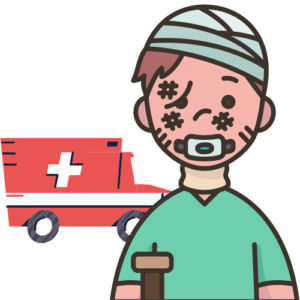
Personal Injury
Are you at risk for personal injury? How long will your business be able to operate if you are injured? If you are self-employed with no employees, probably not very long. Are you prepared to lose all income for a week? a month? permanently? If not, this can be considered a pretty high risk to your business longevity.
If you have employees that can do your job, personal injury may present challenges, but overall have a low risk of having much impact on your ability to earn income. Still, you may want to consider adding disability insurance to your life insurance policy. Visit our business insurance page to learn more about insurance.

Inclement Weather
With climate change we are experiencing new weather extremes and are told this is the new normal, not an exception. Will a couple months of 40 plus celcius weather have an impact on the comfort of your place of business and your customer base? What about massive snow storms and freezing weather? Even if it is not in your own back yard, can it effect your ability to receive products and/or services you require?
A heat wave may be good for business for an ice cream shop and those who sell and service air conditioners, but if your air conditioner or coolers cannot keep up you may start loosing customers and refrigerated products.

Utilities
What happens when if power or gas goes out for an extended period of time? Fire, flood and landslides can and do impact utilities. Can you still do business, and if so, for how long? Do you have a backup plan if your point of sales system doesn’t work? Do you rely on refrigeration equipment, and if so, how long until your products spoil? What will it cost you in product and lost revenue?
Some businesses like a cab company may not even notice, while a grocery store or restaurant may be force to close it’s doors and hope the food doesn’t spoil until the power comes back on. How important is having water and sewer to your business? If it’s critical, make sure you have a readiness plan for how long you can go without each utility. See current and planned outages on the FortisBC Outage map.

Cyber Attack
We all hear of seniors falling prey to scammers and innocent souls who suffer loss and harassment from identity theft, but what happens when it is your business that is targeted by phishing, malware or ransomware? It doesn’t have to be a Russian hacker, it can come from a former employee, competitor, or even a disgruntled client.
Will they attack your bank account? Leave bogus bad reviews on your business or website? Steal client and personal information? Render your computer inoperable until ransom is paid? How important is your data, what systems does your business need to operate, do you have backups and alternatives, and how will it impact your business if you are attacked? Visit our business insurance page to learn more about buying insurance and renewing your policy.

Telecommunications & IT Systems
Most of us don’t realize how much we have come to depend on telecommunications and technology until the internet goes out, or our computer just stops working. We do have options. If the landline doesn’t work, we can use our cell phone, and if the service is bad we can use the internet, but what happens if it all goes down?
How long can you operate without telecommunications if your internal communications stop functioning or a major piece of external network infrastructure is badly damaged? This may be an inconvenience for a small storefront, but for some who work in an office environment and depend on communications it may be the end of their workday.
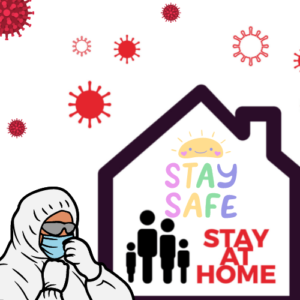
Disease Outbreaks
Before 2020 it may have been hard to convince a business owner this could pose a threat to their business, but since then we have learned a lot. People were told to stay home, and many businesses that were not essential services were forced to close their doors.
Even the businesses that had cash-flow and did survive were faced with a plethora of new expenses. Many required costly modifications to their place of business, and most scrambled to create and enforce new operating policies and procedures for both staff and customers.
We can’t predict the impact of the next viral outbreak, but we can remain cautious and prepared. Keep a supply of masks, sanitizers, and other safety measures on hand, and considering alternative ways to operate and serve customers such as online sales, curb pickup, adding delivery services, alternative marketing such as YouTube and social media
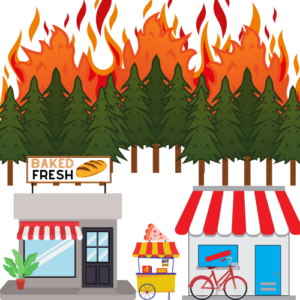
Wildfires
Wildfires in British Columbia are inevitable. Experts warn global warming is increasing both the size and frequency of wildfires. We are now experiencing record heat waves and tinder dry forests. It’s not if there will be another wildfire -it’s when.
Even with sufficient fire insurance for building and contents, when it’s time to make a claim, do you have a list of all your contents, or do you think the insurance company will just believe you? Does wildfire smoke from other provinces and the United States impact the number of customers you see? For those who sell air purifiers it may improve business, but for outdoor exercise and adventure firms it could be devastating to your bottom line.
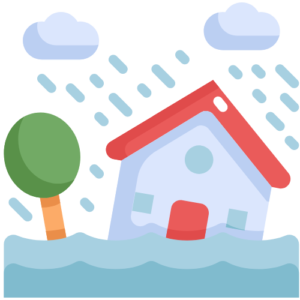
Floods
Floods happen for many reasons. Torrential rain, melting snow, blocked or overflowing creeks and rivers, dam failures, and even wildfires. A forest fire not only kills vegetation that prevents soil erosion, it also creates a water-repellant layer of soil. A brief heavy rainfall can flow unrestricted down a scorched earth mountainside very quickly causing floods in the valley below where most of us live and do business.
Like fire insurance, a business may have flood insurance, but not every policy holder puts much thought into the exact details of the coverage. There may be different deductibles for specific flooding events, or the flood may be elsewhere and impact your livelihood by stopping the flow of goods, services, or customers.
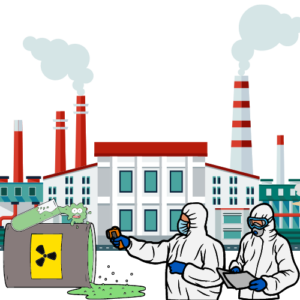
Industrial Incidents
Industrial spills, accidents, shutdowns, and labour disruptions can impact local businesses in a wide variety of ways. A chemical spill or accident may shut down roads or in extreme cases be cause for evacuation, whereas labour disruption may decrease local spending. Some shutdowns may decrease local spending, while maintenance shutdowns can trigger an influx of maintenance workers and a temporary increase in local spending.
Planning for potential economic impact may be a simple as keeping abreast of upcoming maintenance announcements and contract discussions. Planning for business disruption due to accidents or spills is similar to wildfire, flood and road closures as the implications of the incident may range from having less customers or difficulties getting goods and services to outright evacuation.

Road Closures
Although road closures and construction are often short-term inconveniences, they can have a profound impact on the delivery of goods, services and number of daily customers. The impact depends on the severity, location, and duration of the disruption, and it could have a profound impact if your goods or customers cannot reach you.
Chart the routes customers and freight take to reach you on a map. You can then create a boilerplate social media communications plan with fill-in-the-blanks routes customers can take to reach you in the event of a road closure. If your suppliers are flexible there may be alternative routes, carriers or transportation methods for freight, and in some cases you may have access to alternative suppliers.

Key Employee Loss
Some employers fail to consider the potential loss and complications that could be associated with the loss of a key employee. Employees may get injured, move, find other employment, retire, have medical reasons, or quit for other reasons. How will the loss of a key employee impact your business in terms of lost income and extra hours worked? How many key employees does the business have?
Like the road closure action item above, a good starting point is to begin writing down key points on how you rely on each specific key employee along with potential remediation steps.

Other Risks
We cannot list all possible business risks as there are many to consider, and some are quite unique. Vineyard grapes can develop smoke taint, IP can be stolen, machinery can fail, suppliers can go bankrupt, patents can be infringed upon, regulatory compliance can change, key suppliers can go bankrupt, reputations can be smeared, and the list goes on…
Once you know the hazards you face you can begin to find ways to minimize your risks, lessen the impact of an event, recover after the incident, understand your insurance needs, and start drafting your business disaster action plan.

Business Continuity Plan Tool
ACTION PLAN: Start your Business Disaster Action Plan now!
Use our free online Business Continuity Plan Tool to create a custom tailored action plan to minimize the impact of unexpected events on your business. Having an action plan will ensure you are better prepared to continue to operate when (not if) the next economically disruptive event occurs.

